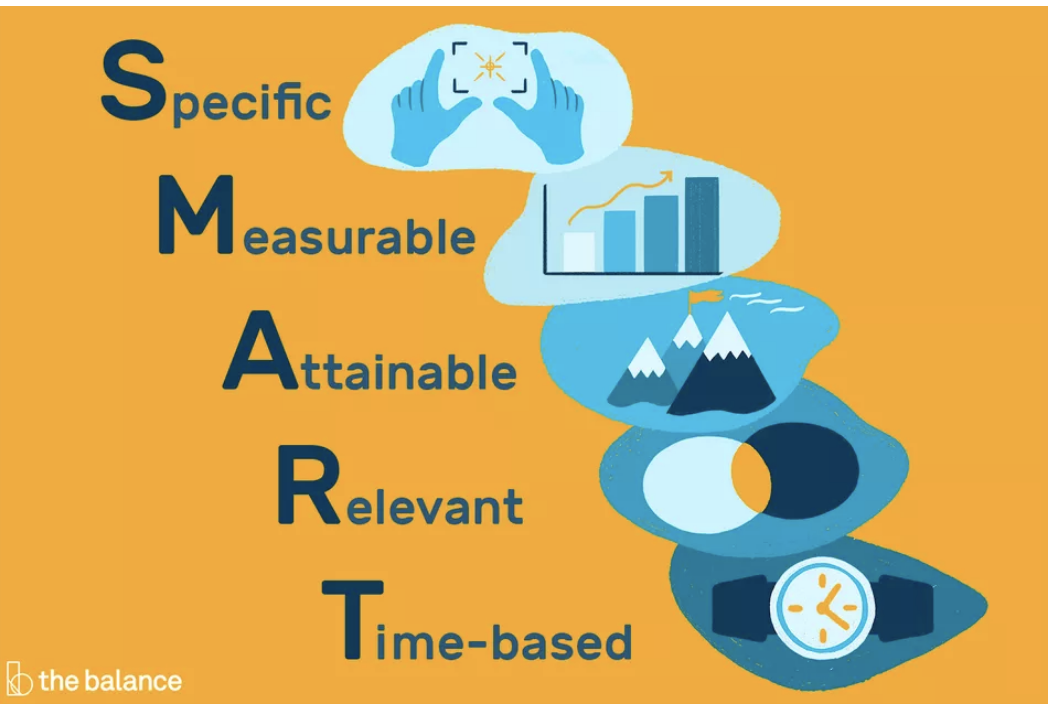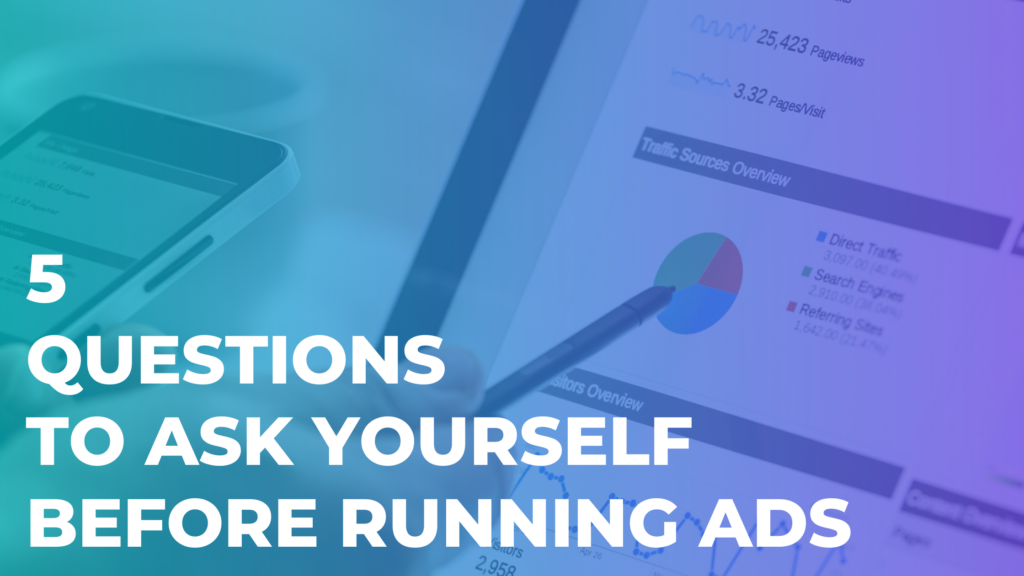Open your phone right now and start scrolling through a social media platform of your choice. I bet within the first 30 seconds, you’re put in front of an ad? Why?

Well, it’s because they’re incredibly effective: 27% of internet users say they find new products and brands through paid social ads.
Generally speaking, when it comes to advertising, you have three main types: paid, earned, and owned. Most often, if you’ve decided to run ads, whether that be through Google Search ads or ads on social media platforms: TikTok, Facebook, Instagram, etc., it’s going to fall into the paid category. What does that mean exactly? It means it’s going to cost you money.
If you’re thinking of spending money to run ads or an ad campaign, there are five questions you need to ask yourself first in order to determine if it’s a promising business venture. Let’s take a look at them and see if running ads is a good strategy for your business.
1. WHO is your target audience?
51% of consumers believe brands send out too much irrelevant content.
While this is an interesting stat, it’s actually not 100% true. It’s not irrelevant content; it’s content that’s being delivered to the WRONG people.
Your target audience includes those people who you can qualify as potential customers for your business. Now, it’s important to note that your target audience is not synonymous to your target market; your target market is much broader, as it’s a group of people your product or service is INTENDED for. Let’s talk through an example to better understand the difference. Say you sell chocolates- a vast majority of people like chocolate, so you have a large target market. However, say Valentine’s Day is coming up. Your target audience is most likely going to narrow to men with significant others.
When you’re creating ad content, this is going to have to be your thought process. Who do you want to see this piece of content? That’s your target audience. A majority of the social platforms can help you target your ads to this audience based off of interests, demographics, etc.
Once you have your target audience, you can start making those creative decisions: what creative, copy, or CTA is going to make this target audience click on this ad and hopefully convert. Crafting personas might be helpful here.
2. WHERE are those people?
So, how can you reach your target audience? You’re going to want to know where they are. Remember when I mentioned personas just a second ago? Those are going to help you out here.
Is your target audience even on social media? The answer is most likely yes, but is your target audience on Instagram? Now, that gets more specific, as the average Instagram user falls between the age range of 25 and 34. Check out this full social media report if you’re looking to see where your target audience is spending their time. This is where you’re going to want to run your ads.
Again, almost all platforms are going to be able to assist you with reaching your desired audience where they are. Google Analytics, for example, can assist in telling you the age group or gender that spends the most time on your website. Tweak your website ad content to fit these people’s interests.
3. WHAT do you want them to do?
You’re going to want to have a goal or objective in mind, as you’re going to be bidding (aka spending your money) for clicks, views, purchases, conversions, and more. Kim Kardashian did warn you at the beginning; this ad stuff costs money.
Without a goal, the success of your campaign can’t be accurately measured. Do you want people to see your ad and build brand awareness or purchase a product or service to increase sales?
Your goal should be S.M.A.R.T.

Specific
If you’re thinking to yourself: “I want this advertising campaign to generate sales,” then you are not crafting a specific goal. Your goal should sound more like this: “I want this advertising campaign to consistently generate sales from cold traffic at an average cost of less than $5 per purchase by the end of the month.” Now THAT is more specific.
Measurable
You’re going to want to set some KPIs into place in order to see if the goal you have set out to achieve is actually being achieved. The advertising goal mentioned above is measurable, as you can determine whether the average cost of less than $5 is being achieved.
Attainable
Making your goals attainable is vital to creating a successful and scalable ad campaign. Use previous data or testing to arrive at what an attainable goal looks like for your business. If you (or your client) allows unattainable goals to be that target, you are quite literally setting yourself up for failure.
Relevant
Ensure that the goals you create are relevant to where your business is, and what KPIs you are targeting. If your current metric for success is sales, it stands to reason that your ultimate goal would be purchase conversions. Maybe your goal is increased brand awareness or “brand lift” – then you might make your goal pertain to video or landing page views.
Time-Bound
Finally, a SMART goal must have a time target. A campaign that generates 50 leads this week is obviously more successful than a campaign that generates 50 leads this year. Again, make your time target attainable.
4. HOW much can you spend?
Before you start running your ads, you’re going to want to determine a budget. If you’re running ads through an agency, ask for their advice on this. If you’re running ads by yourself (ok, I see you ad queen), then it’s best to start small, measure outcomes, then reevaluate.
For instance: conduct an A/B test on an ad set to determine which image is performing better. From there, select the ad with the best performance, then increase your budget and only run the better performing ad.
In addition, your budget should be a direct reflection of your goal. If you have a SMART goal for your campaign, it should be at lot easier to calculate your budget.
My goal is to generate 100 sales this month at an average cost of $15 per purchase conversion, then I know that my budget needs to be around $1500.
5. Was it a success?
You need to choose KPIs you’ll measure during and following your ad execution. Which KPIs should you follow? There are a whole bunch to choose from, but here are a few:
ROAS
This is huge- I mean after all, it’s return on AD spend! That’s what we’ve been talking about in case you checked out for a second. ROAS is the amount of revenue your business is earning for each dollar spent on advertising.
CPC
CPC can be valuable if you know how paid traffic converts on your website. If 5% of every person that visits the page buys from your business and the average purchase value is $50, then you should earn an average of roughly $250 for every 100 people that land on the page. A profitable CPC, therefore, is anything less than $2.50. (YAY MATH!).
CAC
Customer acquisition means different things to different companies. It can be everything from a lead to a purchase to a contract signed. If you know the value of acquiring a customer in your business, you can understand what a profitable CAC is.
CTR
This will help you determine how effective your ad is at getting your potential customer to your website or landing page.
CPM
While cost per mille may not directly affect your business or bottom line, it can be useful in understanding the advertising auction. If there is a lot of competition for ad inventory, your cost per mile can be higher. Additionally, on platforms that allow organic resharing of posts (like Facebook), cost per mille can effectively be decreased by organic shares and mentions.
If you need further help determining whether you should start running ads or actually running ads, feel free to reach out to 12SM for a consultation or learn how we do it.
